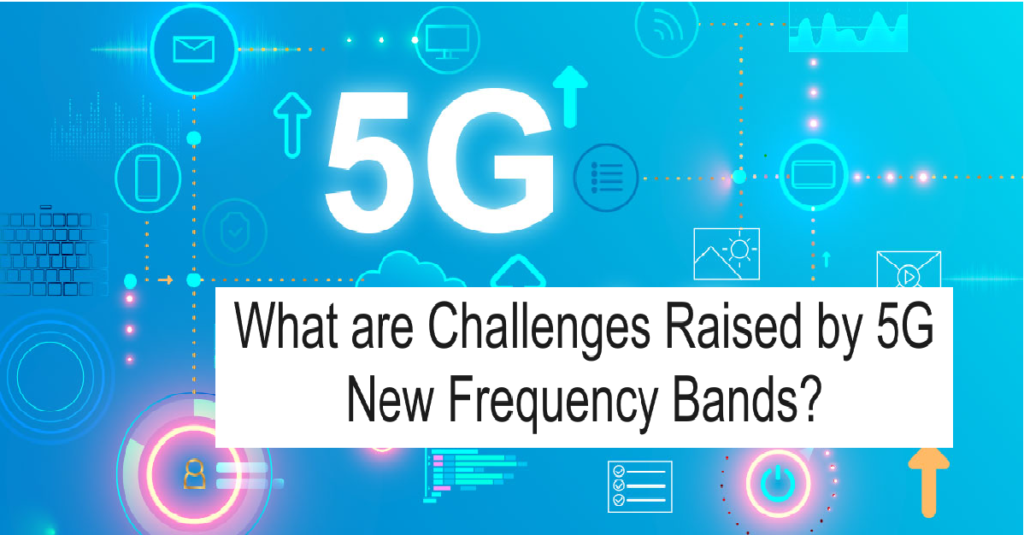To enable massive Internet of Everything (IoE) connections and achieve enhanced Mobile Broadband (eMBB) with high data rates (peak rates of 1 Gbit/s), 5G networks employ high frequency bands such as 28 GHz, 39 GHz, 60 GHz, and 73 GHz, in addition to sub-6 GHz frequency bands.

These high frequency bands have got significant attention from the industry due to their potential to deliver high capacity and ultra-fast speeds. However, compared to low frequency bands, wireless transmission in these high frequency bands faces greater sensitivity to environmental factors and presents unique challenges to radio network planning.
Challenges Raised by 5G New Frequency Bands
Sensitivity to Environmental Factors.
High frequency bands are more susceptible to various environmental factors compared to low frequency bands. Wireless transmission in these bands is highly sensitive to:
- Materials: Signal attenuation occurs when passing through walls, windows, and other structures.
- Vegetation: Trees and foliage can significantly weaken the signal strength.
- Rain Fade: Precipitation causes signal degradation, impacting communication reliability.
- Oxygen Fade: Absorption of signals by atmospheric oxygen, especially pronounced at certain frequencies.
Due to these sensitivities, high frequency bands typically feature smaller coverage areas, necessitating higher accuracy in radio network planning to ensure reliable service.
Research and Development Challenges.
The introduction of new frequency bands in 5G networks brings forth several research challenges and topics for network planning:
1. Propagation Features in High Frequency Bands:
- Research on the fundamental propagation characteristics of high frequency bands is crucial.
- Building a comprehensive database of basic propagation features and establishing a coverage baseline.
- Developing recommended propagation models for both C-band and mmWave frequencies based on theoretical analysis and empirical testing.
2. Outdoor-to-Indoor (O2I) Penetration Loss Modeling:
- Investigating penetration losses specifically for high frequency bands.
- Separate studies for C-band and mmWave frequencies to accurately model how signals penetrate buildings and other structures.
3. Project-Based Propagation Models:
- Developing adaptive propagation models that account for different materials and environments.
- Classifying scenarios based on high-precision electronic maps to improve accuracy.
4. Accurate and Efficient Ray Tracing Models:
- Creating ray tracing models that are applicable to both high and low frequency bands.
- Ensuring these models are precise enough to predict signal propagation paths accurately.
5. Uplink Coverage Improvement:
- Addressing the issue of insufficient uplink coverage in high frequency bands.
- Exploring the use of existing spectrum and uplink and downlink decoupling to enhance coverage.
Simulation Accuracy and Efficiency.
The small coverage areas of 5G high frequency bands impose stringent requirements on simulation accuracy. High-precision 3D models are recommended to simulate the impacts of various factors, such as landforms, building shapes and materials, and vegetation. High-precision ray tracing models are also necessary to enhance the accuracy of propagation path predictions. However, these improvements in simulation accuracy also bring challenges related to simulation efficiency and engineering costs.
To address these challenges effectively, the following steps are essential:
- High-Precision 3D Models: Utilizing detailed 3D models to capture the intricate effects of the environment on signal propagation.
- Ray Tracing Models: Employing advanced ray tracing techniques to accurately predict signal paths.
- Balancing Accuracy and Efficiency: Striving to improve simulation accuracy while managing the associated costs and ensuring efficient planning processes.
For further details on propagation models, refer to articles “Body Block Loss” and “Propagation Model Calibration.” The network planning guide for uplink and downlink decoupling is described in a separate guide document and is not included in this article.